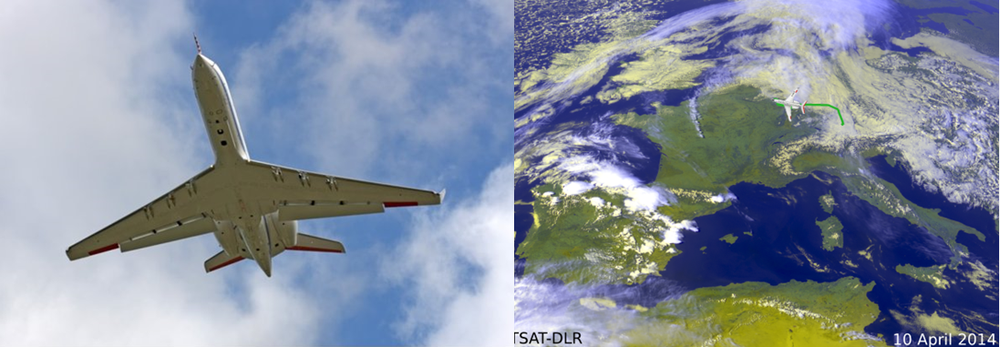Cloud Physics (WOL) Department

Despite their relevance for climate, some physical processes in clouds and their effects on the composition of the atmosphere and its radiation budget remain unresolved. Large uncertainties in today’s climate assessments are linked to the comprehensive characterization of clouds, their variability and their impact on the humidity and trace gas distribution of the upper troposphere and lower stratosphere (UTLS).
Aircraft at cruise directly emit in the UTLS region. Besides trace gases and aerosol emissions, aviation contributes to climate change via the formation of contrails and cirrus clouds. At present, contrail cirrus contribute the largest share to the aviation effects on climate. The concerted mitigation of airtraffic climate effects, e.g. via alternative fuels or innovative engines, requires a solid data base to better understand the underlying physical and chemical processes. Therefore, we measure the aircraft emissions and resulting cloud modifications with research aircraft and satellites.
We focus our research on:
- Cloud physics: nucleation, lifecycle, microphysics and radiation
- Impact of clouds on the weather and climate
- Cirrus clouds and PSCs
- Processes of liquid- and mixed-phase clouds
- Aircraft emissions, contrails and contrail cirrus
- New technologies and alternative fuels for aviation
- Retrievals of volcanic ash retrievals and icing conditions for a safe aviation

We develop modern methods for the detection of clouds and water vapour in the atmosphere:
- Laser spectroscopy with cloud sondes: PIP, HVPS, 2D-S, CAPS, CCP, FFSSP, FCDP to detect the size distribution, cloud water content and shape of cloud particles
- Atmospheric chemical Ionization mass spectrometry to measure H2O, HNO3, HCl, SO2
- Hygrometry: frost point hygrometer, tunable diode laser TDL instruments, dropsondes
- Aerosol and cloud remote sensing from satellite (MSG)
The instruments are integrated on the research aircraft HALO, Falcon, DC8 and P5. We aim at complementing the in-situ observations with laboratory studies and remote sensing of clouds to better understand cloud formation, life cycle and climate impact.
The department of cloud physics is associated with the Experimental Atmospheric Physics department at the Institute of Atmospheric Physics of the University Mainz.
